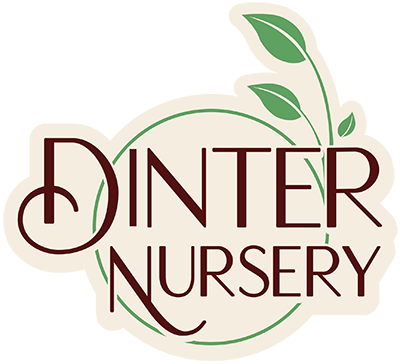A Year-round Perennial Garden
Top tips for planning a diverse and vibrant perennial garden with something to offer every month of the year
Herbaceous perennials are an excellent way to create a sense of seasonality, bring pollinators into the garden, and enjoy a diverse array of flower types and colours. Often people hesitate to use perennials because they are perceived as high maintenance, but with some purposeful planning you will be greatly rewarded and extremely delighted with using them in the border.
There are endless perennials that bloom May and June, but the season of interest doesn’t need to stop there. Here’s our top tips when it comes to planning a diverse and vibrant perennial garden with something to offer every month of the year.
Welcome in the gardening season with spring ephemerals
These perennials quickly emerge in the spring, put on a beautiful display and die back to their underground parts after a short growing season. Once later flowering perennials put on growth they fill in the gaps created by these early spring blooming plants. Our favourites include:
Pasque flower (Pulsatilla vulgaris)
Trillium
Fawn lily (Erythronium)
Shooting star (Dodecatheon)
Wood anemone (Anemone nemerosa)
Utilize hardworking plants and multi season performers
The interest of a perennial border does not need to stop at the end of spring. Choose perennials that are hard workers and have multiple seasons of interest, to ensure colour in your garden from spring through to fall. Our favourites include:
Heart-leaf Brunnera (Brunnera ‘Jack Frost’) - Forget-me-not type blue flowers emerge in spring followed by ornamental silver and green foliage that persists to the first hard frost.
Rozanne Geranium - One of the longest blooming perennials in the garden, Rozanne is a free-flowering geranium cultivar as its flowers are sterile. Blooming from late spring to mid fall it produces blue-purple flowers.
Catmint (Nepeta ‘Walker’s Low’) - A compact perennial that produces light purple flowers from spring through to early fall. Shearing the flowers after they are finished will encourage another bloom.
Tickseed (Coreopsis verticillata ‘Moonbeam’)
Perennial salvia (Salvia nemerosa ‘Caradonna’) - Another perennial that will produce multiple flushes of blossoms if deadheaded after flowering. Beautiful purple spikes that attract pollinators to the garden.
Embrace the changing seasons
As the days shorten and the temperatures get chillier, fall brings with it another palette of perennials to choose from. Late-season perennials are a great way to transition the garden into the colder months ahead. Our favourite late-season perennials include:
Autumn Joy Stonecrop (Sedum ‘Autumn Joy)
Japanese Anemone (Anemone japonica)
River lily (Shizostylis coccinea)
Sneezeweed (Helenium)
Monkshood (Aconitum)
Russian Sage (Perovskia)
Do not be afraid of heights
Many perennials have great structure and height, helping to anchor the garden and add another layer of interest. Our favourite perennials for adding height and structure to the garden are:
Fleece flower (Persicaria polymorpha)
Baneberry (Actaea simplex ‘Brunette’)
Perennial sunflower (Helianthus ‘Lemon Queen’)
Joe Pye Weed (Eupatorium)
Globe thistle (Echinops ritro)
Evergreen foliage is not just for shrubs
Many perennials have evergreen foliage that can add interest to the garden all winter long. Our favourite perennials with evergreen foliage are:
Jerusalem sage (Phlomis russeliana)
Elephant’s ears (Bergenia cordifolia)
Coralroot (Heuchera)
Artemisia (Artemisia ‘Powis Castle’)
Wall flower (Erysimum ‘Bowle’s Mauve’)
Leave the seedheads
Resist the urge to chop down perennials and ‘clean up’ the garden in the fall. Seedheads look beautiful when there is a heavy frost and bring birds into the garden all winter long. Our favourite perennials for their seedhead interest are:
Culver’s root (Veronicastrum)
Licorice mint (Agastache)
Coneflower (Echinaecea)
Sea holly (Eryngium)
Ornamental onions (Allium ‘Millenium’)
Cover the ground
Groudcovers not only add another level of interest, but help to suppress weeds and reduce maintenance. Our favourites are:
Creeping thyme (Thymus serpyllum)
Lithodora ‘Grace Ward’
Lamb’s-ear (Stachys byzantina)
Creeping phlox (Phlox subulata)
Stonecrop (Sedum sp.)Whatever it is, the way you tell your story online can make all the difference.
Try using a plant from each group to ensure year-round interest and diversity in your garden. Remember, gardening is all about experimenting and learning, so get out there and enjoy yourself.








